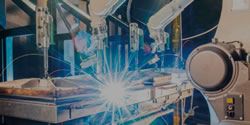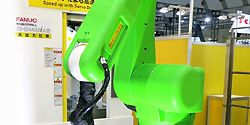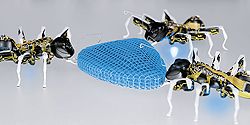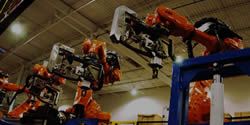The Rise of the Robots - So What?
The article will show how a 'local for local' production model - the strategy of manufacturing goods in proximity to their intended customers to promote regional self-sufficiency - can become a reality thanks to digital manufacturing.
3+2 Vs. 5-axis: What's the Difference?
Adding two axes to the conventional three axes does technically create a machine with five axes, but this 3+2 mechanism does not exactly equal a 5-Axis machine.
The Impact of Robotics in Fluid Dispense Applications in Manufacturing
Because dispense applications are so important in the manufacturing industry, companies are now looking for ways to improve the dispense accuracy and quality by investing in the latest in dispensing technology by way of semi-automated robot dispensing technologies.
What Do Robotics Mean for the Cutting Tools Industry
Friend or foe? Helper or fiend? Here's what robotics really mean for the cutting tools industry and what are the pitfalls to watch out for.
Positioning Accuracy on the Gripper of a Robot Arm
For the grinding machine producer Strausak, the robot manufacturer Stäubli and the encoder supplier HEIDENHAIN, the insertion of cylindrical tools into tool holders with a robot arm was a real challenge-and therefore a task made to measure.
Robots in Manufacturing Applications
Standard robot models are now mass-produced, making them more available to meet the ever-increasing demand. These robots are more straightforward, and more conducive to plug and play installation.
Robots: A New Kind of Manufacturing Workforce
Improving the effectiveness of small and medium manufacturers could help stimulate the economy and drive job creation. Adding robotic employees to the manufacturing mix might just make manufacturers in the United States more competitive with their counterparts in Asia.
This Factory Robot Learns a New Job Overnight
MIT Technology Review: Fanuc’s robot uses a technique known as deep reinforcement learning to train itself, over time, how to learn a new task. It tries picking up objects while capturing video footage of the process. Each time it succeeds or fails, it remembers how the object looked, knowledge that is used to refine a deep learning model, or a large neural network, that controls its action. Deep learning has proved to be a powerful approach in pattern recognition over the past few years.
“After eight hours or so it gets to 90 percent accuracy or above, which is almost the same as if an expert were to program it,” explains Shohei Hido, chief research officer at Preferred Networks, a Tokyo-based company specializing in machine learning. “It works overnight; the next morning it is tuned.”... ( full story )
The making of: BionicANTs
What do ants and Industry 4.0 have in common? What challenges faced the engineers when it came to developing these delicate technology platforms? Take a look behind the scenes and dive into the world of the Bionic Learning Network... ( cont'd )
Four Points You Need to Consider when Thinking About Automating or Robotizing Your Operations
If your products have regular and stable characteristics, hard automation makes sense. If however each product is different, flexible automation or robotics should be favored.
Records 1 to 10 of 10
Featured Product

T.J. Davies' Retention Knobs
Our retention knobs are manufactured above international standards or to machine builder specifications. Retention knobs are manufactured utilizing AMS-6274/AISI-8620 alloy steel drawn in the United States. Threads are single-pointed on our lathes while manufacturing all other retention knob features to ensure high concentricity. Our process ensures that our threads are balanced (lead in/lead out at 180 degrees.) Each retention knob is carburized (hardened) to 58-62HRC, and case depth is .020-.030. Core hardness 40HRC. Each retention knob is coated utilizing a hot black oxide coating to military specifications. Our retention knobs are 100% covered in black oxide to prevent rust. All retention knob surfaces (not just mating surfaces) have a precision finish of 32 RMA micro or better: ISO grade 6N. Each retention knob is magnetic particle tested and tested at 2.5 times the pulling force of the drawbar. Certifications are maintained for each step in the manufacturing process for traceability.

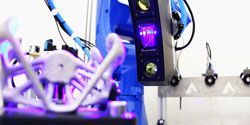
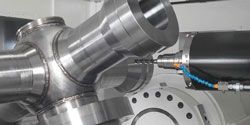

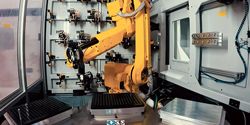
.jpg)
